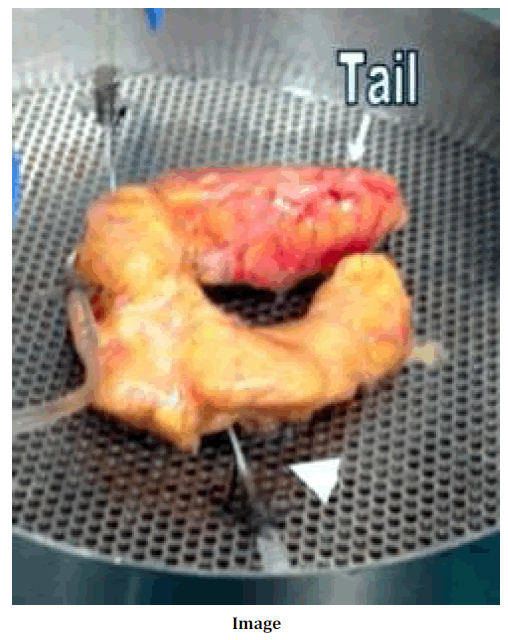- (2014) Volume 15, Issue 1
Tatsuya Kinand AM James Shapiro
Clinical Islet Laboratory and Clinical Islet Transplant Program, University of Alberta. Edmonton, Alberta, Canada
Received October 31st, 2013 – Accepted November 8th, 2013
Islets of Langerhans; Islets of Langerhans Transplantation; Tissue Donors
A 20-year-old male with intracerebral bleeding due to a motor vehicle accident as the cause of death became a multiorgan donor. He did not have any notable medical history including pancreas disease. The pancreas was procured en bloc with the spleen and duodenum at a distant hospital and shipped to our institute for the purpose of islet isolation and transplantation. During a routine preparation of the pancreas prior to islet isolation, the uncinate process was found to extend along with the third portion of the duodenum to left side of the supra mesenteric vein, forming an elongated unusual lobe. The whole pancreas was horseshoe shaped (Image: the arrowhead points a catheter inserted into the orifice of Wirsung’s duct). The term “horseshoe pancreas” is not new. In 1960s, when radioisotope scanning of the pancreas was under development, some researchers used this term to describe one of several morphological types of the pancreas [1]. The term is also seen in the early image literature to describe the pancreatic ductal configuration [2]. A feature of these previously described “horseshoe pancreas” is a left-right symmetric type where the tail is oriented inferiorly. This is totally different from cases of ours and others [3]: a superiorinferior symmetric type. Surgeons should be aware that the uncinate process can extend and form an elongated lobe as this variant may impact the surgical approach.

The authors declare no conflict of interest